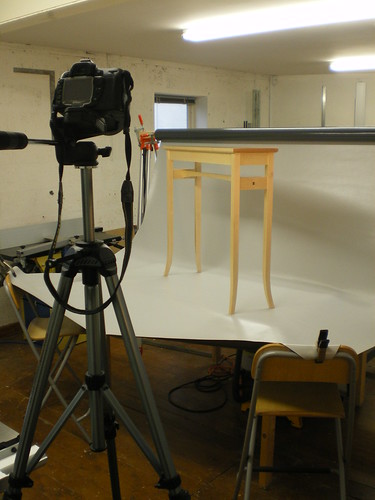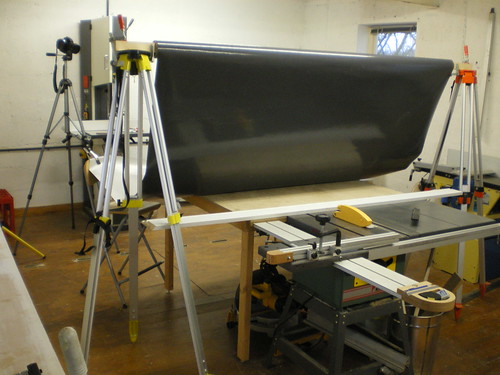Mr Ed
Established Member
Since I was photographing a table today (see projects) I thought I would show a couple of pics showing how I set up for photos. Would be interesting to know what other people do also.


I use a roll of Sarnafil single ply roofing membrane as a backdrop, supported on a couple of survey tripods. The membrane is smooth and light grey which is perfect for a backdrop. I use my outfeed/assembly table as the working surface, which does mean I have to have the tripod set high as well and I stand on a milk crate to reach the viewfinder!
I then use the shop lighting and a halogen site lamp on a tripod to add extra light. I usually try and wait for a sunny day as I have plenty of windors, but in winter thats not very often going to be possible. I never use flash as I cannot get the colours to work for me - that's probably down to my lack of photo skills but I prefer to see the lighting before I press the shutter.
I use a Nikon D80 digital SLR on P setting, with an 18-135 Nikkor zoom lense. Whilst its not photo perfection, I generally get results I am happy with;

Cheers, Ed


I use a roll of Sarnafil single ply roofing membrane as a backdrop, supported on a couple of survey tripods. The membrane is smooth and light grey which is perfect for a backdrop. I use my outfeed/assembly table as the working surface, which does mean I have to have the tripod set high as well and I stand on a milk crate to reach the viewfinder!
I then use the shop lighting and a halogen site lamp on a tripod to add extra light. I usually try and wait for a sunny day as I have plenty of windors, but in winter thats not very often going to be possible. I never use flash as I cannot get the colours to work for me - that's probably down to my lack of photo skills but I prefer to see the lighting before I press the shutter.
I use a Nikon D80 digital SLR on P setting, with an 18-135 Nikkor zoom lense. Whilst its not photo perfection, I generally get results I am happy with;

Cheers, Ed

































